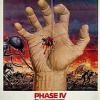- Formiculture.com
- Forums
- Gallery
- Members
- Member Map
- Chat

Lasius ID Question
Started By
rptraut
, Sep 8 2022 6:49 PM

Best Answer OiledOlives , October 30 2022 - 11:20 AM
Neoniger/americanus/niger if you're in an area where they're invasive
Sent from my IN2015 using Tapatalk
Go to the full post 
26 replies to this topic
#21
 Online
-
Posted October 30 2022 - 2:52 PM
Online
-
Posted October 30 2022 - 2:52 PM
Thank you for your time and patience with this question. I really appreciate the benefit of your expertise.
My father always said I had ants in my pants.
#22
 Offline
-
Posted March 19 2023 - 11:59 AM
Offline
-
Posted March 19 2023 - 11:59 AM
I looked on antmaps and canada has one of the highest diversities in lasius species.
You may need microspic picsWhat body part(s) do you need better detail of to make a more specific ID?
The problem with Canada is that even some of the provinces here are so big that sites like antmap can be deceiving. Some ant species that may be abundant on one side of a province may not be in on the other side. When you dig deeper into the actual sightings and records behind the data in Antmap it becomes evident that all the sighting were on one side and there were no sightings on the other side. And to be clear this is not because of remote regions or area not explored/documented. It is well over a 5 hour drive going East-West across Ontario as an example. That it a lot of diversity in environment.
Edited by Lazarus, March 19 2023 - 12:00 PM.
- ANTdrew likes this
My online ant spreadsheet
#23
 Offline
-
Posted March 19 2023 - 12:21 PM
Offline
-
Posted March 19 2023 - 12:21 PM
Good to see you back, Lazarus.
- Lazarus likes this
"The ants are a people not strong, yet they prepare their meat in the summer." Prov. 30:25
Keep ordinary ants in extraordinary ways.
Keep ordinary ants in extraordinary ways.
#24
 Online
-
Posted March 19 2023 - 4:40 PM
Online
-
Posted March 19 2023 - 4:40 PM
I hope you can imagine the confusion with ant ID, especially Lasius when microscopic pictures are required. It seems to me that ID could also be refined by considering things like habitat where found and nesting habits. Ant maps are only as good as the reports that make them and ant mapping probably isn't a very high priority. Nice to hear from you.
- ANTdrew likes this
My father always said I had ants in my pants.
#25
 Offline
-
Posted March 23 2023 - 9:54 AM
Offline
-
Posted March 23 2023 - 9:54 AM
Good to see you back, Lazarus.
I never left. I was just in "Diapause" mode. ![]()
- ANTdrew likes this
My online ant spreadsheet
#26
 Offline
-
Posted March 23 2023 - 10:10 AM
Offline
-
Posted March 23 2023 - 10:10 AM
This whole forum has been stuck in that mode for a year at least now.
"The ants are a people not strong, yet they prepare their meat in the summer." Prov. 30:25
Keep ordinary ants in extraordinary ways.
Keep ordinary ants in extraordinary ways.
#27
 Offline
-
Posted March 23 2023 - 2:36 PM
Offline
-
Posted March 23 2023 - 2:36 PM
IF you look at this key for North American Lasius species: https://www.antwiki...._Lasius_Species
you will note the first delimiting character is maxillary palp segment counts! This is informative of the need for specific types of clear and if possible stacked images. The second delimiting character is number of ommatidia (!) or standing hairs (!)...upshot, giving definitive morphology based species delimiting advice for this complex genus should be done with caution, especially if actually and not "guessed at" species delimiting is what is wanted. So anyone wanting a proper Lasius ID should peruse the link above and consider the type of images one is actually able to present to delimit. Just my two cents worth. I am not posting this to discourage but just to emphasize the difficulty of this genus.
As a side note I would add that details on ecology and habitat may be of benefit and should be considered in any species definition. When morphology based keys, especial those using metrics such as "n mm ± Standard Deviation" for a key such as for Lasius americanus "Within the size range PW (pronotum width) 0.53-0.70 mm". things get dicey!!
Or for example Dr. Seifert's Key to European Tapinoma. For T. subboreale he has this "EL / CW 0.260 ± 0.008 [0.246, 0.278]" which is an index requiring two measurements: eye length and cephalic width.
I used his approach in delimiting the North American Tapinoma in my upcoming species description. The second upshot, morphology based delimiting using measurements can be daunting and just trying to delimit using standard non-stacked images is often a fools errand.
Edited by PurdueEntomology, March 23 2023 - 2:45 PM.
- ANTdrew likes this
1 user(s) are reading this topic
0 members, 1 guests, 0 anonymous users

















